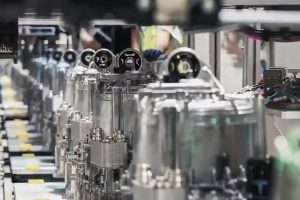- 🚗 Honda shows hesitance towards aggressive EV adoption due to consumer commitment levels.
- 🌍 Consumers’ willingness to transition to EVs is affected by geographical factors, like charging infrastructure.
- 📈 Honda monitors gradual growth in charging stations, important for EV ecosystem readiness.
- 💼 Ford also adjusts its EV strategy focusing on profitability concerns, similar to other automakers.
The automotive industry is undergoing a profound transformation, with electric vehicles (EVs) at the forefront. However, not all automakers are matching the pace of this change with equal enthusiasm. Honda, a prominent player in the global automotive market, is exhibiting a measured approach to EV adoption, as highlighted by recent industry analysis. This strategy delves into consumer readiness, geographical challenges, and the broader infrastructure underpinning EV integration. In this comprehensive blog post, we explore why Honda and other major automakers like Ford are cautious in their EV strategies and how these decisions are shaping the future of transportation.
Understanding Honda’s Hesitance Towards EV Adoption
Consumer Commitment Levels
Honda’s hesitance to dive headfirst into the electric vehicle market can be primarily attributed to consumer commitment levels. It’s crucial to understand that while there is a growing global interest in EVs, consumer readiness varies significantly across regions:
- Cultural and Behavioral Shifts: Transitioning from internal combustion engine (ICE) vehicles to EVs requires a shift in mindset. Many consumers are still attached to traditional vehicles due to familiarity, cost considerations, and perceived reliability.
- Economic Factors: The financial implications of purchasing an EV are considerable. The initial costs, though mitigated by incentives in some regions, still deter a segment of consumers.
Geographical Influence on Consumer Willingness
The geographical distribution of EV infrastructure plays a pivotal role in consumer willingness to switch from ICE to EVs. Here are some factors influencing this dynamic:
- Availability of Charging Stations: In regions like the Midwest United States, where charging stations are sparse, consumers are less likely to adopt EVs. The anxiety over running out of power without a nearby charging station is a significant deterrent.
- Urban vs. Rural Divide: Urban areas with higher density charging solutions see higher EV adoption, contrasting sharply with rural locales where infrastructure development lags.
Honda’s Strategy: Gradual Ecosystem Preparation
Honda’s executives have articulated a strategy centered around the gradual preparation of the EV ecosystem. This involves monitoring and incrementally increasing the number of charging stations to support a structured transition to electric vehicles.
Steps in Honda’s Approach:
- Infrastructure Monitoring: By focusing on the growth trajectory of charging stations relative to EV sales, Honda aims to ensure that infrastructure development aligns with consumer adoption rates.
- Collaborative Ecosystem Development: Working with governments and private entities, Honda supports the expansion of EV-related infrastructure, making the transition seamless for consumers.
- Incentives and Educative Campaigns: To address consumer hesitancy, Honda engages in initiatives that inform potential buyers about the benefits of EVs, from economic savings to environmental impact.
Ford’s Alignment: Profitability and Market Realities
While Honda analyzes infrastructure and consumer readiness, Ford’s approach reconsiders the economic viability of its EV strategy. Like Honda, Ford is stepping back to reassess its EV plans due to the following reasons:
Focus on Profitability
- Cost-Driven Strategy: Ford has observed that while EVs form a potential future pathway, profitability remains elusive. By adjusting strategies, Ford seeks a balance between innovation and financial sustainability.
- Phased Rollouts and Consumer Trends: Market demands fluctuate, and Ford tunes its strategy to echo consumer trends, balancing costs and commitment levels to ensure long-term viability.
Conclusion: Moving Forward in a Complex Landscape
The transition to a fully electric automotive future is intricate, influenced by multi-faceted challenges and diverse consumer landscapes. Both Honda and Ford exemplify strategies that seek to balance consumer readiness, infrastructure availability, and economic practicality.
Automakers continue to navigate these complexities, setting the stage for incremental yet steady progress in EV adoption. As this landscape evolves, collaborative efforts between automakers, governments, and consumers will be essential in achieving a sustainable automotive future.





